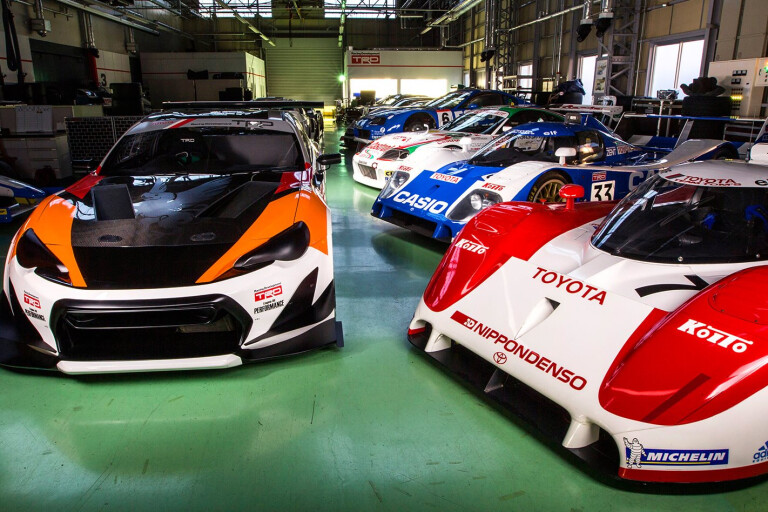
Humans have a long record of preserving history. The Inca, for instance, paraded their mummified dead to maintain a relationship with the supernatural. This, they believed, was crucial for survival of the soul.
Today that notion lives on, at least when it comes to cars. Some of the world’s most impressive places of worship for the “moved-on” belong to marques, including this particular treasure trove belonging to Toyota Racing Developments, the Japanese car maker’s racing division that’s almost as old as the company itself.
Despite housing an invaluable inventory of Toyota’s motorsport past, this stable is not annexed to the car maker’s public automobile museum. TRD Station, as it’s known, sits downtown in Yokohama, 40 minutes south of Tokyo city centre. And after a quick left turn into a TRD prefecture, it’s barely visible from the street.

Between a crew of four they share at least 160 years of company service – even more in industry experience. For them, maintaining a collection of Toyotas that saw the company on motorsport’s most famous stages is their reward. Locals and other Toyota staff refer to the men as ‘takumi’, translated as ‘artisans’.
 So high is the level of expertise, Japan’s first supercar, the 2000GT, can be completely restored under this one roof. And, if you time your visit right, you may catch a stillborn WRC MR2, built to Group S regulations, or a close-but-no-cigar 1999 TS020 Le Mans car, temporarily visiting for repairs before leaving for display or demonstration.
So high is the level of expertise, Japan’s first supercar, the 2000GT, can be completely restored under this one roof. And, if you time your visit right, you may catch a stillborn WRC MR2, built to Group S regulations, or a close-but-no-cigar 1999 TS020 Le Mans car, temporarily visiting for repairs before leaving for display or demonstration.
Younger blood work next door on TRD’s factory line, currently assembling a limited-edition Toyota 86 called the 14R60, but it’s here, amongst Le Mans specials, rally champions and even classic supercars, where Toyota’s pedigree and soul endures. And over these next pages MOTOR grants you full access inside TRD Station.
1997 Toyota GT500 Supra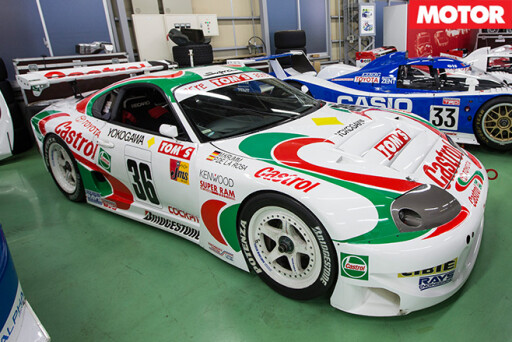 THE TOM’S-run, TRD-developed Supra imprinted the brand on a generation of young Playstationers, but it didn’t wield the road car’s 2JZ inline-six, oh no. Instead, the Supra GT was powered by a 2.1-litre four-cylinder turbo, known as the 3S-GT.
THE TOM’S-run, TRD-developed Supra imprinted the brand on a generation of young Playstationers, but it didn’t wield the road car’s 2JZ inline-six, oh no. Instead, the Supra GT was powered by a 2.1-litre four-cylinder turbo, known as the 3S-GT.
While lighter than the 2JZ, the already race-proven 3S also made more economic sense in early days, when TRD received little funding from Toyota for the GT program. Still, tuned to 358kW, it claimed considerable success in Japan’s Super GT GT500 class.
1988 Toyota WRC ST165 Celica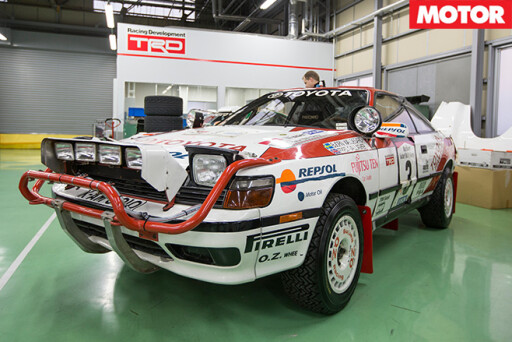 While the Celica Twin Cam Turbo that lived during WRC’s Group B era was reliable, two-wheel drive meant it was ultimately handicapped. In 1988, though, that all changed. Shaped by the slower, but safer, Group A rules, the first-generation ST165 Celica brought with it all-wheel drive, Toyota’s 3S-GTE engine and, more importantly, victory. The latter was first achieved in its second season, here in Australia, before it carried Carlos Sainz the WRC drivers’ title in 1990.
While the Celica Twin Cam Turbo that lived during WRC’s Group B era was reliable, two-wheel drive meant it was ultimately handicapped. In 1988, though, that all changed. Shaped by the slower, but safer, Group A rules, the first-generation ST165 Celica brought with it all-wheel drive, Toyota’s 3S-GTE engine and, more importantly, victory. The latter was first achieved in its second season, here in Australia, before it carried Carlos Sainz the WRC drivers’ title in 1990.
1970 Toyota 7 Long before the WEC-winning TS040, Toyota’s first race car was one that never lived out its potential. The Toyota 7 was designed and built in-house, destined for Le Mans and Can-Am. The first late-60s versions, using Yamaha 3.0-litre V8s, were uncompetitive. Speed soon came in 1969 when the 5.0-litre V8 version won the Fuji 1000. The 1970 car, seen here, was ready for twin-turbo power and Can-Am, however the global fuel crisis led to its early retirement.
Long before the WEC-winning TS040, Toyota’s first race car was one that never lived out its potential. The Toyota 7 was designed and built in-house, destined for Le Mans and Can-Am. The first late-60s versions, using Yamaha 3.0-litre V8s, were uncompetitive. Speed soon came in 1969 when the 5.0-litre V8 version won the Fuji 1000. The 1970 car, seen here, was ready for twin-turbo power and Can-Am, however the global fuel crisis led to its early retirement.
2014 Toyota 86 Griffon After the release of the 86, TRD set itself a technical challenge that would flaunt its own abilities as well as the car itself. It aimed to lap Japan’s Tsukuba circuit in under a minute, but with no change to the 86’s 2.0-litre engine’s aspiration. TRD then went all Formula One on the Griffon concept, as it was called, replacing as much as possible with wind-tunnel-tested carbonfibre bits. Using only 169kW, the 980kg Griffon 86 last year lapped Tsukuba in 58.4sec, faster than Best Motoring did in a Ferrari 458.
After the release of the 86, TRD set itself a technical challenge that would flaunt its own abilities as well as the car itself. It aimed to lap Japan’s Tsukuba circuit in under a minute, but with no change to the 86’s 2.0-litre engine’s aspiration. TRD then went all Formula One on the Griffon concept, as it was called, replacing as much as possible with wind-tunnel-tested carbonfibre bits. Using only 169kW, the 980kg Griffon 86 last year lapped Tsukuba in 58.4sec, faster than Best Motoring did in a Ferrari 458.
1992 Toyota TS010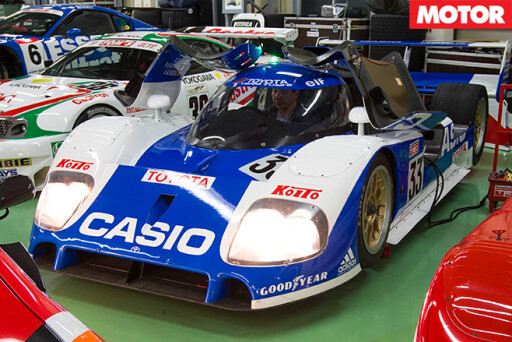 Toyota built it to win in sports car racing, but after a relatively fruitless career the TS010 is better remembered for its incredible engine. Restricted only by engine capacity, Toyota opted to stack the 3.5-litre V10 with a pyre of revs rather than forced-induction to achieve power. That meant five valves per cylinder, a 13,000rpm (!) redline and 447kW in race trim. When Toyota was invited to Sydney’s then-named Eastern Creek circuit to endurance test the car, it clocked over 300km/h through turn one. It also pinned a couple of noise fines on Eastern Creek circuit from the Environmental Protection Authority.
Toyota built it to win in sports car racing, but after a relatively fruitless career the TS010 is better remembered for its incredible engine. Restricted only by engine capacity, Toyota opted to stack the 3.5-litre V10 with a pyre of revs rather than forced-induction to achieve power. That meant five valves per cylinder, a 13,000rpm (!) redline and 447kW in race trim. When Toyota was invited to Sydney’s then-named Eastern Creek circuit to endurance test the car, it clocked over 300km/h through turn one. It also pinned a couple of noise fines on Eastern Creek circuit from the Environmental Protection Authority.
1986 Toyota Group S AW11 MR2 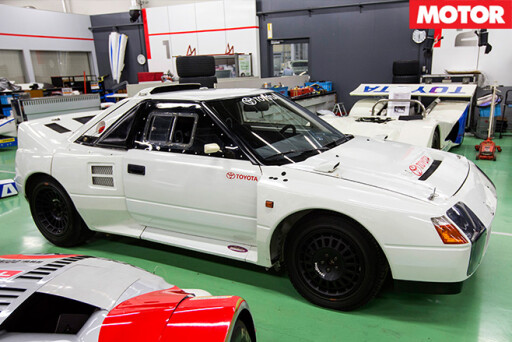 Besides a few campaigns in GT racing, Toyota’s MR2 never tasted serious motorsport. That was set to change in 1987. With TTE’s rear-drive Celica off the pace in WRC’s Group B, it planned to bring itself up to speed with a mid-engined, all-wheel drive MR2 for 1987’s new Group S regs. Sadly, with Group B’s demise went Group S as well, so the MR2 never saw its day on dirt. The prototypes developed an insane 367kW from a dry-sumped, 2.1-litre version of Toyota’s 3S-GTE engine dubbed the 503E, though in competition it would have been limited to 224kW. Conjecture within Toyota surrounds exactly how many prototypes were built (either 11 or 15), but only three survive.
Besides a few campaigns in GT racing, Toyota’s MR2 never tasted serious motorsport. That was set to change in 1987. With TTE’s rear-drive Celica off the pace in WRC’s Group B, it planned to bring itself up to speed with a mid-engined, all-wheel drive MR2 for 1987’s new Group S regs. Sadly, with Group B’s demise went Group S as well, so the MR2 never saw its day on dirt. The prototypes developed an insane 367kW from a dry-sumped, 2.1-litre version of Toyota’s 3S-GTE engine dubbed the 503E, though in competition it would have been limited to 224kW. Conjecture within Toyota surrounds exactly how many prototypes were built (either 11 or 15), but only three survive.
1993 Toyota WRC ST185 Celica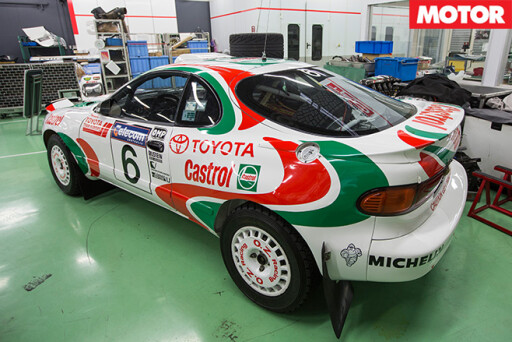 Streaked with the same iconic red and green swirls as the TOM’s Supra, the ST185 Celica was just as integral in popularising Toyota’s race cars with the Sega generation. It also gave Toyota a new WRC weapon and helped Sainz, Kankkunen (who used three co-drivers to do so) and Auriol claim the WRC drivers’ title in three consecutive years (1992-’94). This particular example is Kankkunen’s, kept in the same condition as when it competed in the 1993 Rally Australia – Telecom Australia stickers and all.
Streaked with the same iconic red and green swirls as the TOM’s Supra, the ST185 Celica was just as integral in popularising Toyota’s race cars with the Sega generation. It also gave Toyota a new WRC weapon and helped Sainz, Kankkunen (who used three co-drivers to do so) and Auriol claim the WRC drivers’ title in three consecutive years (1992-’94). This particular example is Kankkunen’s, kept in the same condition as when it competed in the 1993 Rally Australia – Telecom Australia stickers and all.
2007 Toyota Supra HV-R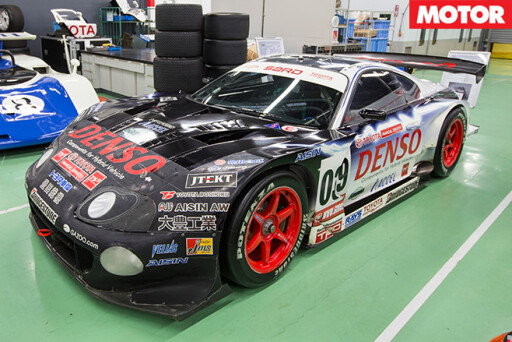 Looks like another Supra GT car, right? Well, actually, the HV-R is a hybrid, and a successful one, too. It still featured the naturally-aspirated 4.5-litre V8 that TRD used to supersede the turbo inline-four, but it matched it with two front-wheel electric motors and a 150kW rear unit. A capacitor provided the current, reaping its charge from its four-wheel braking regeneration system. With it, Toyota and SARD took the Tokachi 24 Hours endurance race in Japan, in 2007.
Looks like another Supra GT car, right? Well, actually, the HV-R is a hybrid, and a successful one, too. It still featured the naturally-aspirated 4.5-litre V8 that TRD used to supersede the turbo inline-four, but it matched it with two front-wheel electric motors and a 150kW rear unit. A capacitor provided the current, reaping its charge from its four-wheel braking regeneration system. With it, Toyota and SARD took the Tokachi 24 Hours endurance race in Japan, in 2007.
2006 Lexus GT500 SC430 If the performance of the road car was anything to go by, Lexus’s SC430 would make a terrible race car to succeed the venerable Supra GT. In 2006, however, with the Supra more than four years absent from showrooms, it needed to be replaced. And because Super GT cars are far removed from their road counterparts, TRD took the SC430 GT to instant success, winning the GT500 class. It utilised the previous Supra GT’s 4.5-litre V8 that made 353kW at 7000rpm, and weighed 1080kg.
If the performance of the road car was anything to go by, Lexus’s SC430 would make a terrible race car to succeed the venerable Supra GT. In 2006, however, with the Supra more than four years absent from showrooms, it needed to be replaced. And because Super GT cars are far removed from their road counterparts, TRD took the SC430 GT to instant success, winning the GT500 class. It utilised the previous Supra GT’s 4.5-litre V8 that made 353kW at 7000rpm, and weighed 1080kg.
2012 Lexus IS F CCS-R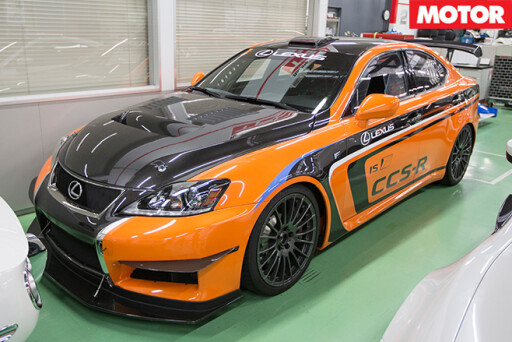 Something less antiquated than the cars it’s surrounded by, the Lexus CCS-R was built for America’s most famous hill climb, Pikes Peak. The CCS-R was an IS-F in race car clothing, being treated to a significant weight saving from carbon body parts and more downforce from its front splitter and rear wing. During the Peak’s first year with a fully-paved course, the CCS-R made it to the top in 12:03.085, albeit in damp conditions. It survives as a promotional vehicle.
Something less antiquated than the cars it’s surrounded by, the Lexus CCS-R was built for America’s most famous hill climb, Pikes Peak. The CCS-R was an IS-F in race car clothing, being treated to a significant weight saving from carbon body parts and more downforce from its front splitter and rear wing. During the Peak’s first year with a fully-paved course, the CCS-R made it to the top in 12:03.085, albeit in damp conditions. It survives as a promotional vehicle.

COMMENTS